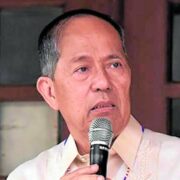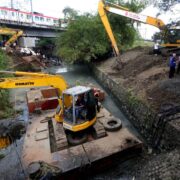Unnatural disasters

Barely had Typhoon “Tino” finished wreaking havoc in the country when Supertyphoon “Uwan” loomed large. There is no point in comparing the damage caused by the two, as their scope spanned multiple regions, targeting the most geographically vulnerable ones. This came after the devastation already wrought by earthquakes. We suffered too many unnecessary deaths, with millions more displaced.
In disaster research, we often preface our papers by stating that the Philippines faces roughly 20 typhoons a year. Located in the Pacific Ring of Fire, we are no strangers to earthquakes and volcanic eruptions. Filipinos are of hardy stock forged by these elements, to the point that our needs get minimized due to our so-called “resilience.”
What is different, however, is that these events seem to be bringing about much more destruction than ever. We don’t even need the intensity of a typhoon to cause a disaster anymore; heavy rainfall is enough to cause floods in minutes. Places that do not usually consider themselves particularly vulnerable now flinch whenever it rains. One thing we acquired alongside our long history of typhoons should have been our ability to predict where they will hit us the most and the severity of the damage they are likely to cause. Now, everything seems haywire, and no one is immune.
I remember being told a long time ago that we do not use the term “natural disasters” anymore, as these disasters are now considered to be just man-made as all the others. Human factors in climate change are the biggest drivers of this way of thinking. When before we could still assume some semblance of a “typhoon season,” now typhoons can come at any time. Weather events are much more extreme and unpredictable.
Another factor that worsens disasters is human encroachment. We don’t consider an event a disaster until there is a human toll, whether through death, property destruction, or displacement. Population density means that people are forced to settle in areas that are geographically unstable. Lack of adequate housing and urban planning means that people are crammed into areas filled with fault lines, areas that we already know flood periodically, and areas that are prone to landslides.
During a disaster planning tour in Baguio City, also a long time ago, we were informed that its population was already four times over the safe limit. Given Baguio’s geographical hazards, it should never have allowed this many people to live there. It was the same when the hazards of Tagaytay City were shown to us at a conference. Unfortunately, these also happen to be tourist-friendly places due to their relatively temperate climate. As such, tourism and commercial interests trump land-use concerns most of the time. Beleaguered and exhausted workers and researchers show us the data year after year, only for their concerns to land on the deaf ears of policymakers. And to think of how we’ve come to find out now that these policymakers are doing so to pocket millions and billions of pesos, these disasters truly are man-made.
Disaster preparedness is a year-round endeavor. I remember sitting in a recent academic gathering once where the speaker bemoaned that we are merely reactionary when it comes to disasters. As someone who’s been around disaster scholars and responders for at least a decade now, I strongly beg to differ. I know of many people who never left the work. Just because the headlines stop writing about them doesn’t mean the work ever stopped. Front-liners are always ready to be deployed and engage in recovery work and training in between deployments.
Capacity building is a never-ending effort; it only depends on the budget that is given. Perhaps therein lies the crux of the problem: it is the budget and resources that are seasonal and reactionary, not the work itself. It is the winds (and whims) of politics that come and go, but the problem never leaves.
In emergency and disaster health, we evaluate outcomes based on two things: preventable deaths and unnecessary complications. We may not be able to prevent typhoons from coming, but we can mitigate the damage. The Philippine Atmospheric, Geophysical, and Astronomical Services Administration or Pagasa has been doing the hard work of informing us of risks that should guide our decision on whether to evacuate. Early evacuation has saved many lives. Fellow columnist Manuel L. Quezon III’s article yesterday (“Timing is everything,” 11/12/25) highlighted Iloilo’s strategy regarding their spillways, filling them with coastal wetland instead of housing. We in disaster research also often look to Bicol’s planning and strategies as a model.
Disasters do not have to be the new normal. We must, however, stop sabotaging our survival with our commercial and self-interest.
—————-
aatuazon@up.edu.ph


















